10 Tips – How To Bond With Your Boston Terrier
When we brought home our first Boston Terrier, I couldn’t help but picture the future where our new puppy was grown, and she and I had a strong bond in everything we did.
How to bond with your Boston Terrier? Bonding with your Boston Terrier is best accomplished in ten ways: play together, do training together, use feeding time, positive experiences, respect them, take trips, visit dog-friendly businesses, give snacks by hand, establish rules, stay healthy and enjoy quiet time together.
That sounds like a simple list, but let’s dive in a bit further to understand what it really takes.
Bonding with your Boston Terrier makes them happy
Knowing how to make your Boston Terrier happy is easy when you have a strong bond with them.
It takes time to understand each other and read your dog’s body language that is the key to unlock happiness.
In 2016 Professor David J. Mellor published Moving beyond the “Five Freedoms” by Updating the “Five Provisions” and Introducing Aligned “Animal Welfare Aims”, an improvement on the Five Freedoms framework for animal welfare.
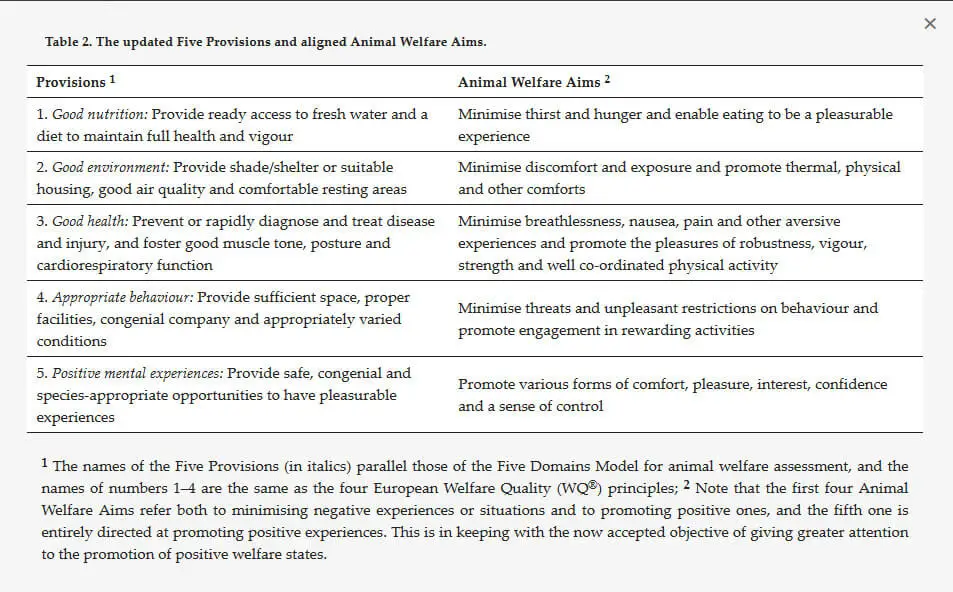
In this update, Mellor reports that the five animal welfare provisions are the following:
- Good nutrition
- Good environment
- Good health
- Appropriate behavior
- Positive mental experiences
Read more about the Five Domains Model.
Our recommendations are based on this framework and are practical applications of one or more of these animal welfare aims for your dog.
The ten tips below will help ensure the strongest bond between you and your Boston Terrier.
1. Play Together
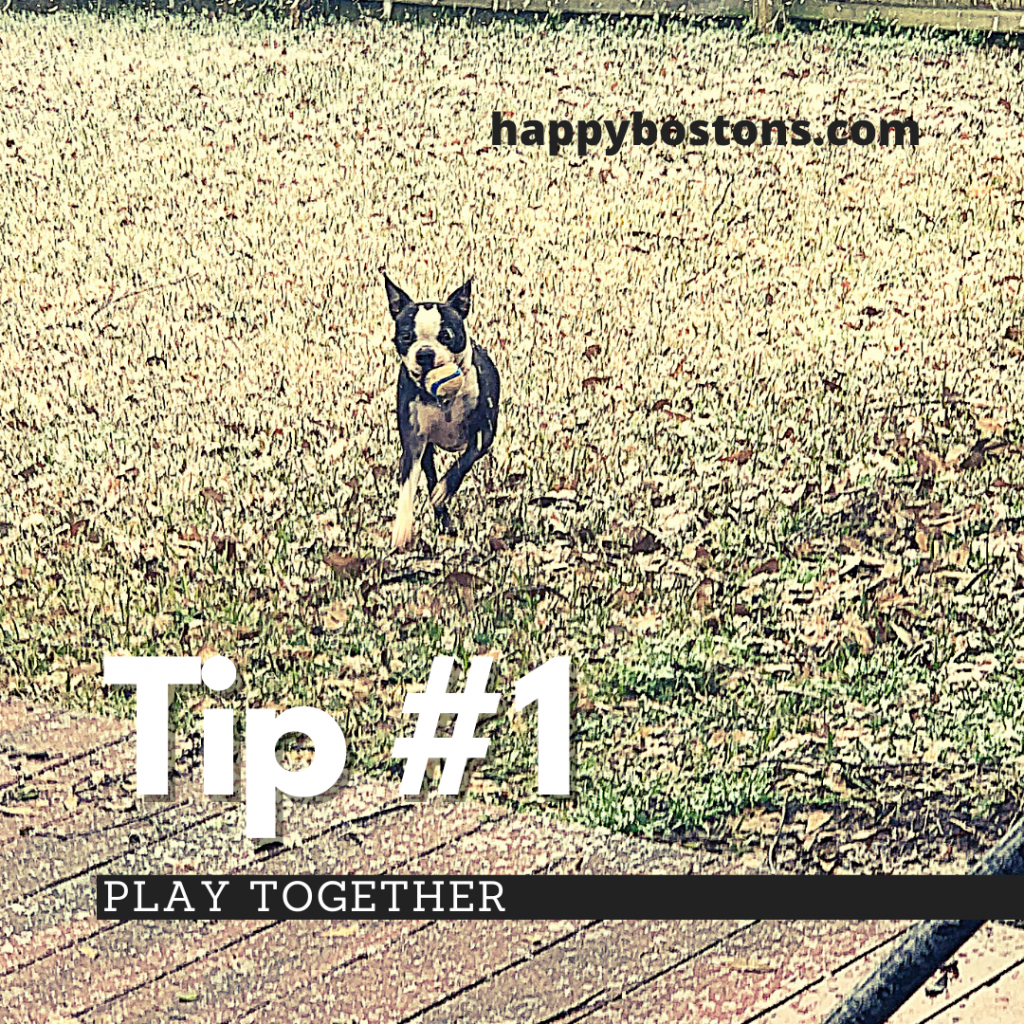
Playing with your Boston Terrier builds a social bond between you both. Remember, your lovable four-legged friend is a descendant of pack hunting animals.
Playtime helps build motor skills and also increase “social adhesion” and confidence. These assist your dog to better cope with unexpected events in a more confident and less fearful way in the future.
Not all dogs know how to play well. This may be especially true of dogs from poorly run breeders or pet stores. In these situations, the dog may have missed out on the opportunity to learn how to play.
A dog trainer will help your Boston learn how to play “well” if this is a problem.
Try playing tug-of-war to mimic natural tendencies to rip and tear. We love the Jolly Pets Romp-n-Roll Rope and Ball Dog Toy. They play tog of war with us and with each other.
How about fetch with a disc or the perfect ball? Our Boston, Ryder, goes nuts for the Chuckit Ultra Ball Small.
Like to fetch a flying disc? Try the Kong Rubber Flyer which is easy on your Boston’s teeth and mouth.
Heck, our Bostons love when I’m trimming trees and play all afternoon by sneaking off with the smaller branches, playing “keep away” from each other.
For a more in-depth look at bonding over playtime, read Play Together, Stay Together – Happy and Healthy Play Between People and Dogs.
2. Do dog training together

Dog training is not just about obedience. It is a great way to build the bond between you and your Boston Terrier.
Start with obedience training as it sets a solid foundation for how y’all will interact with each other. Then look for things that interest your Boston.
For example, if you are active and your Boston loves to run, jump and go where you direct them, try agility training.
Learning to solve problems together is another benefit of doing dog training with your Boston Terrier. Go beyond obedience training for even more problem-solving challenges.
3. Feed Him Well
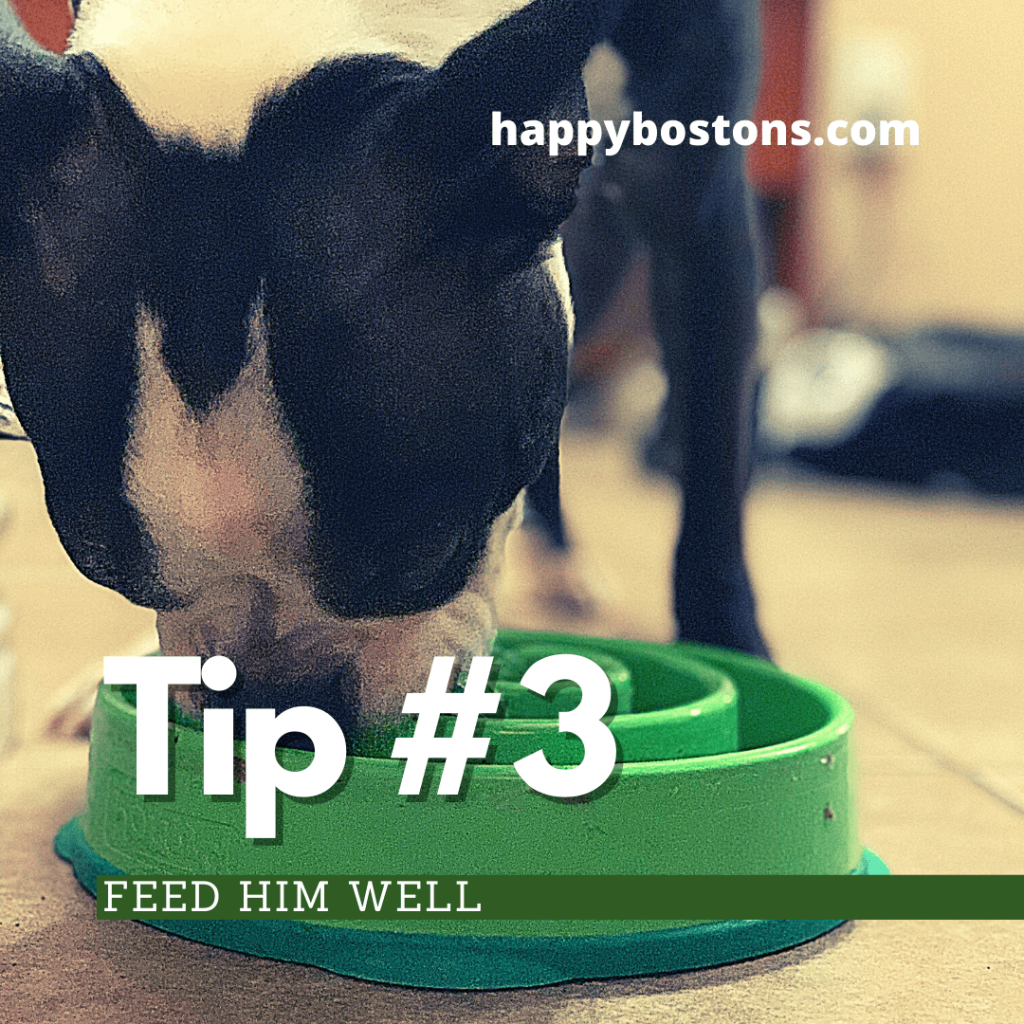
Feeding time is more than dumping food in a bowl. Use the time to bond with your Boston.
Enforce a sit and stay while you prepare the food. Then invite your dog to eat when you are ready.
Stay nearby every so often. I even reach into my dog’s food dish periodically to reduce any tendency to be protective of a food source, especially when children do the unexpected.
Use a high quality, limited ingredient dog food. Our Bostons love Natural Balance L.I.D. Salmon and Sweet Potato small breed. Having moved from another brand many years ago, they are much healthier now.
4. Positive Experiences Always
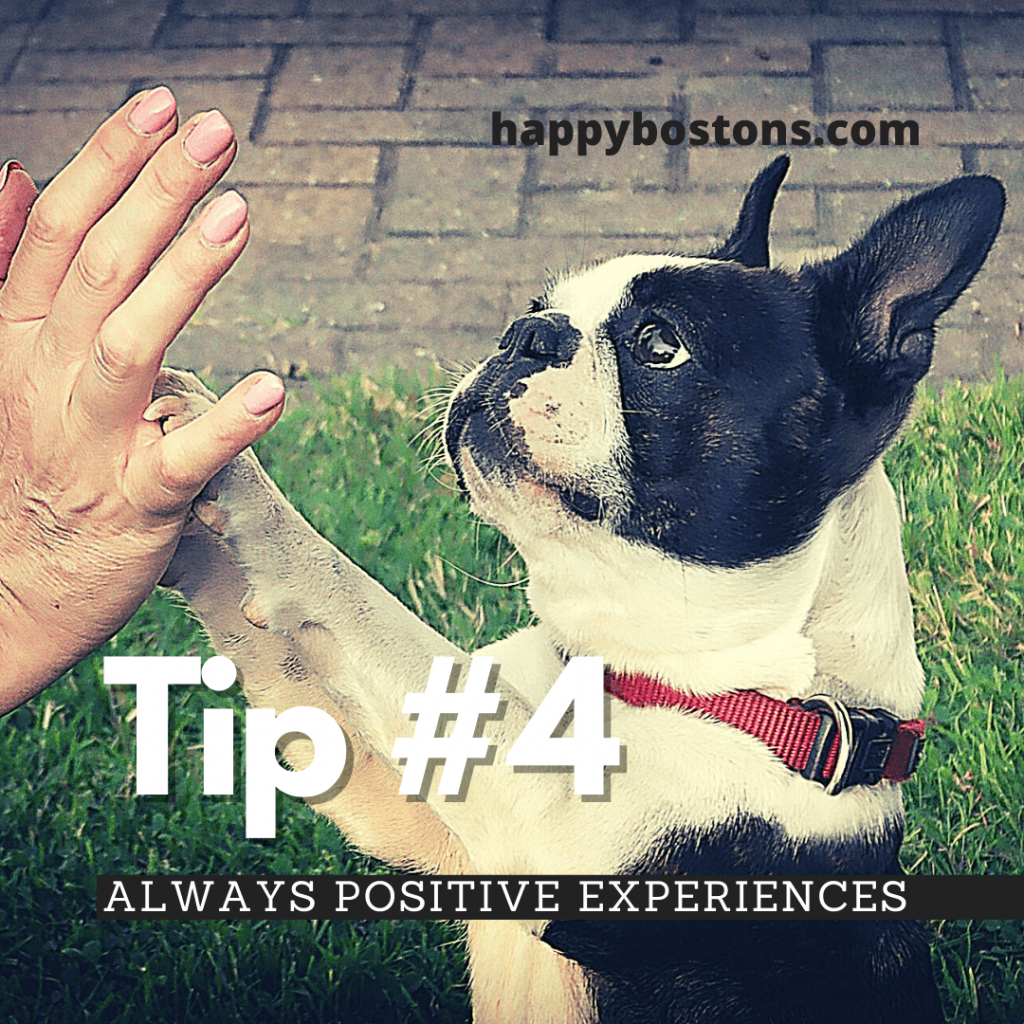
It’s important to leverage every opportunity as a positive experience to grow the bond with your Boston.
Let’s face it. Not everything you do with your dog is going to be fun. Getting its nails trimmed or taking a bath may not be fun for them in the beginning.
Be intentional to make the experience a positive one.
Find ways to use positive reinforcements, treats, or gradually introducing unpleasant activities.
For example, before and after the grooming appointment, take them for a special playtime or special treat at a dog-friendly restaurant.
Over time, they will associate grooming as something they look forward to, rather than brace against.
5. Respect Her
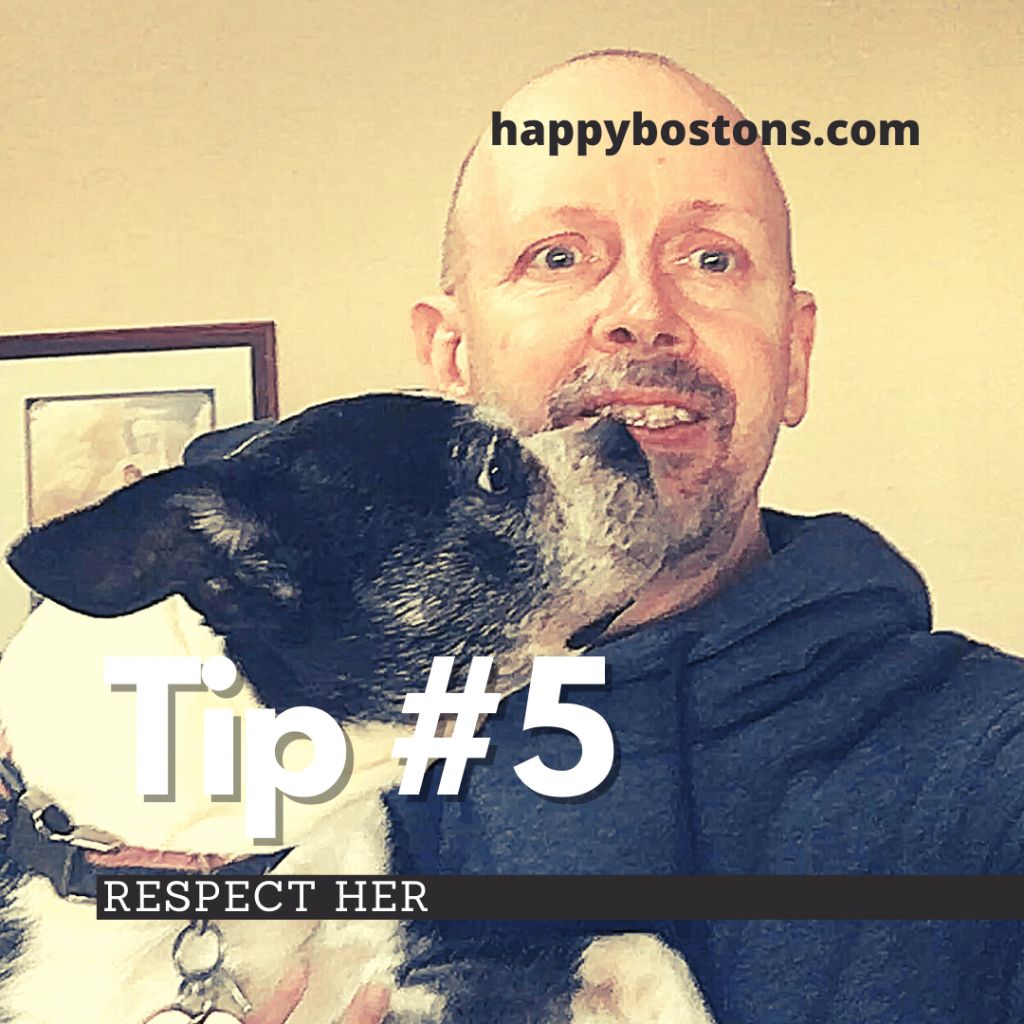
Dogs need respect too.
Every dog is unique. Your Boston might like to have its belly rubbed or ears scratched. Another Boston may dislike both.
Spend time with your Boston in an intentional way to understand their likes and dislikes.
It is essential to get to know your dog’s likes and dislikes and then respect those preferences. You’ll find their affection will grow over time.
6. Trip Together
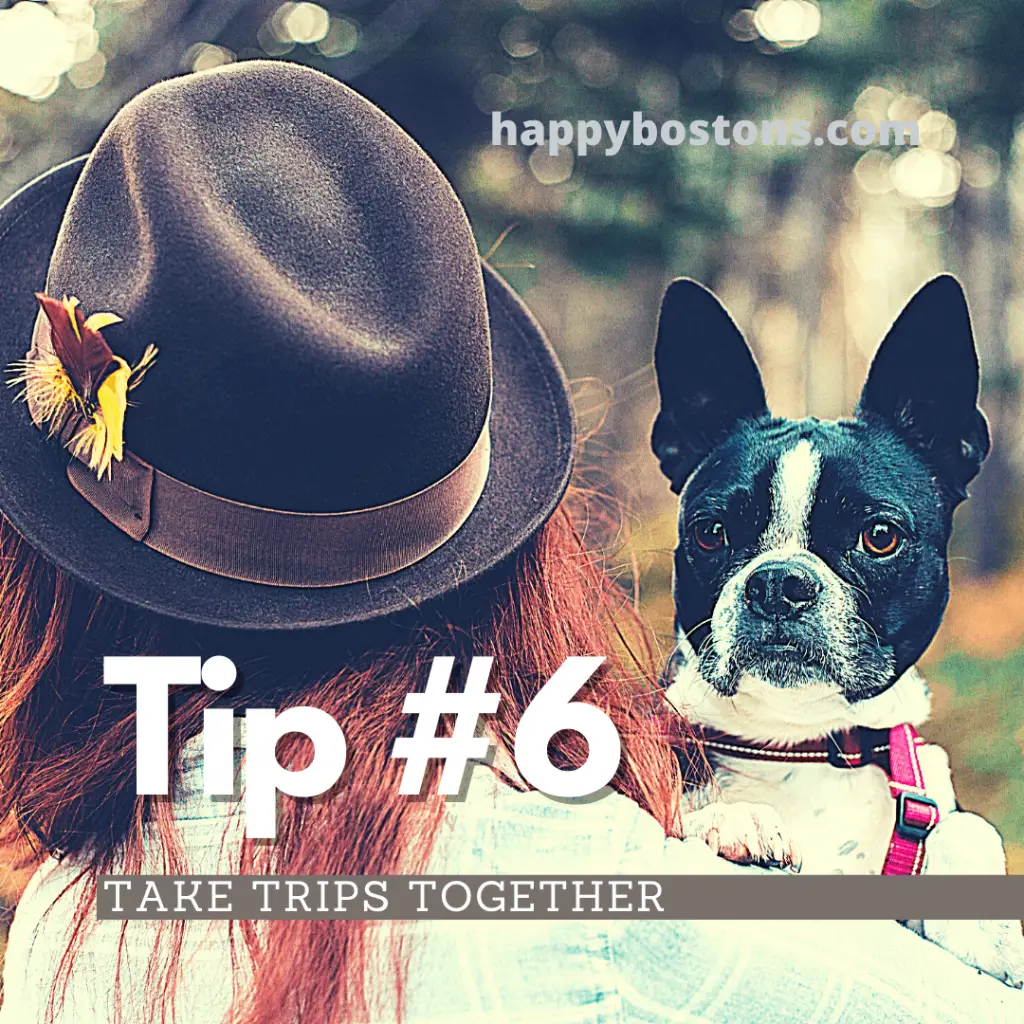
Taking a trip together is a great way to bond with your Boston Terrier.
Start with trips into town. Then progress with a few short half-day road trips and grow into longer overnight trips.
Many pet-friendly hotels require a proper crate/kennel, which is another good reason to do crate training at home. Best sure to pick the right crate for your Boston Terrier
Even for road trips, be sure to have a proper crate and seat belt harness.
Don’t forget water and food dishes. This 4-Pack of Silicone Collapsible Dog Bowls on Amazon is a great deal and they are BPA free.
For a day out walking or hiking, a BPA free water bottle / bowl combination is the perfect companion
7. Visit Dog-Friendly Businesses Together
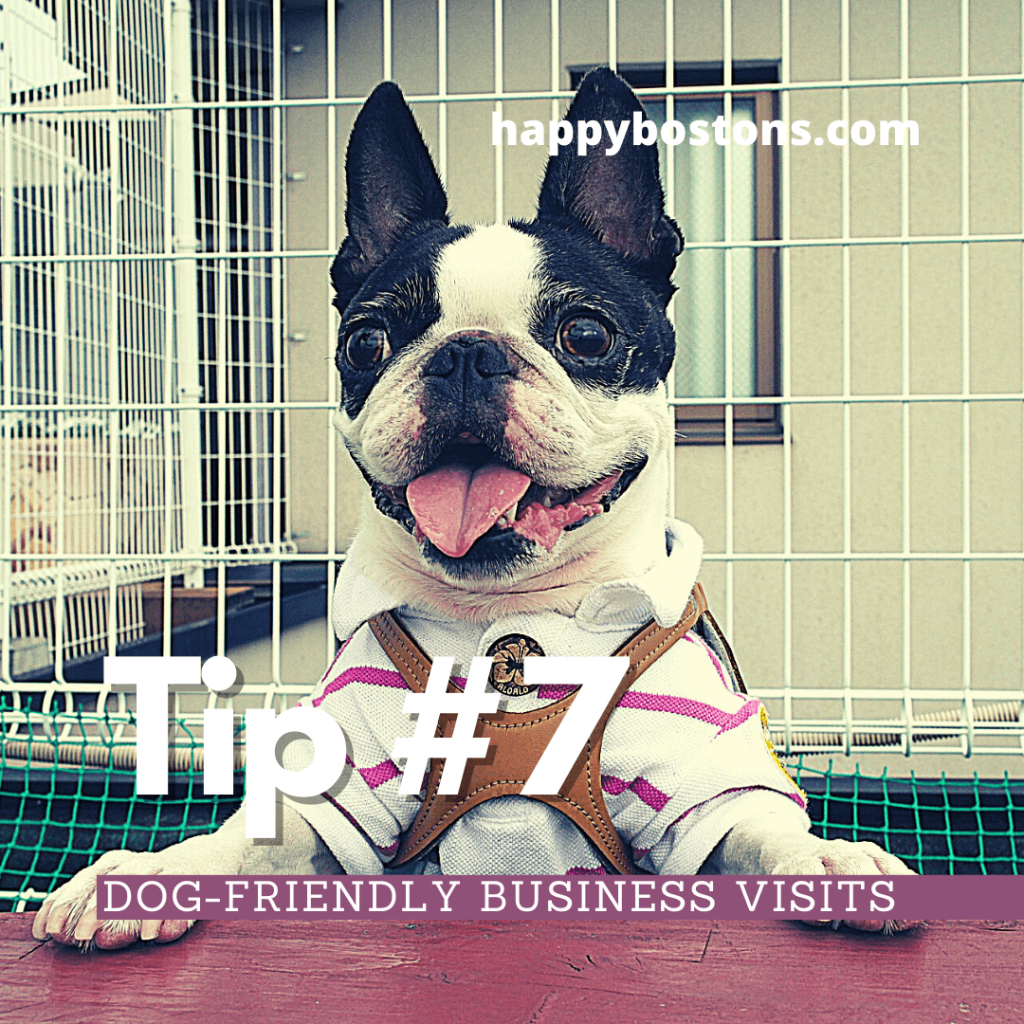
Another fun bonding time with your dog is going to dog-friendly businesses. These short trips are a great training ground for longer trips.
Ryder, one of our Bostons, gets so excited any time we let him in the car.
For us, Dairy Queen, Starbucks, Sonic are a couple of dog-friendly drive-thrus. Others have secret pet menus. Ask next time you visit your favorites food/drink spots.
Pro Tip, many marina restaurants are pet-friendly since families tend to bring their four-legged friends with them for a day on the boat.
Bonus Tip – Convince your boss to let you bring your dog to work. Policies are changing and there are plenty of great reasons for businesses to allow pets at work.
8. Snack By Hand
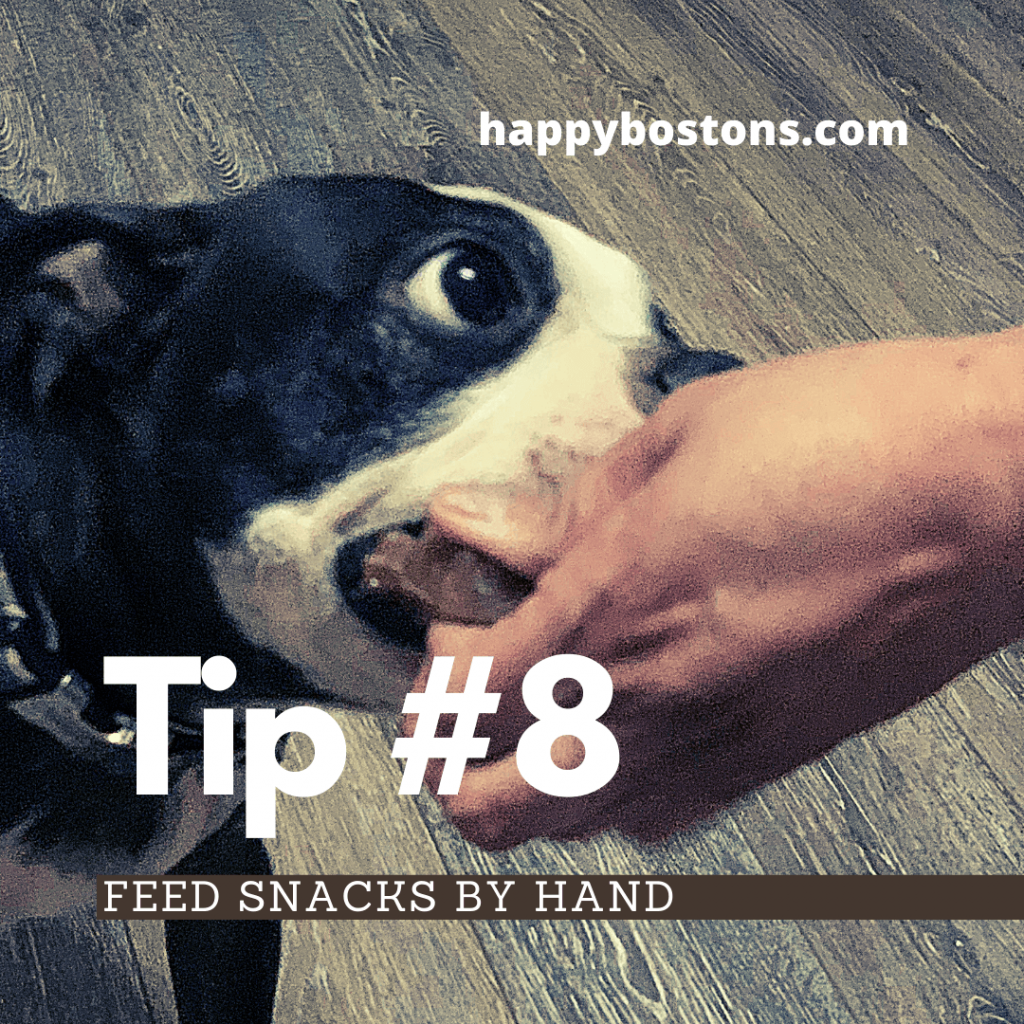
Just like feeding, snack time is another excellent bonding opportunity.
Use the time to practice easy commands or teach a new trick with lots of praise. This reinforcement genuinely brings you and your Boston closer together.
Feeding snacks by hand continues to reinforce positive experiences from little hands. It a fast attack grab developments, enforce rules for sitting and being gentle. We use the word “easy” as the command trigger to be gentle.
Training is an ongoing process needing reinforcement over time.
Try some healthier snack options in moderation for variety.
9. Spend Quiet Time Together
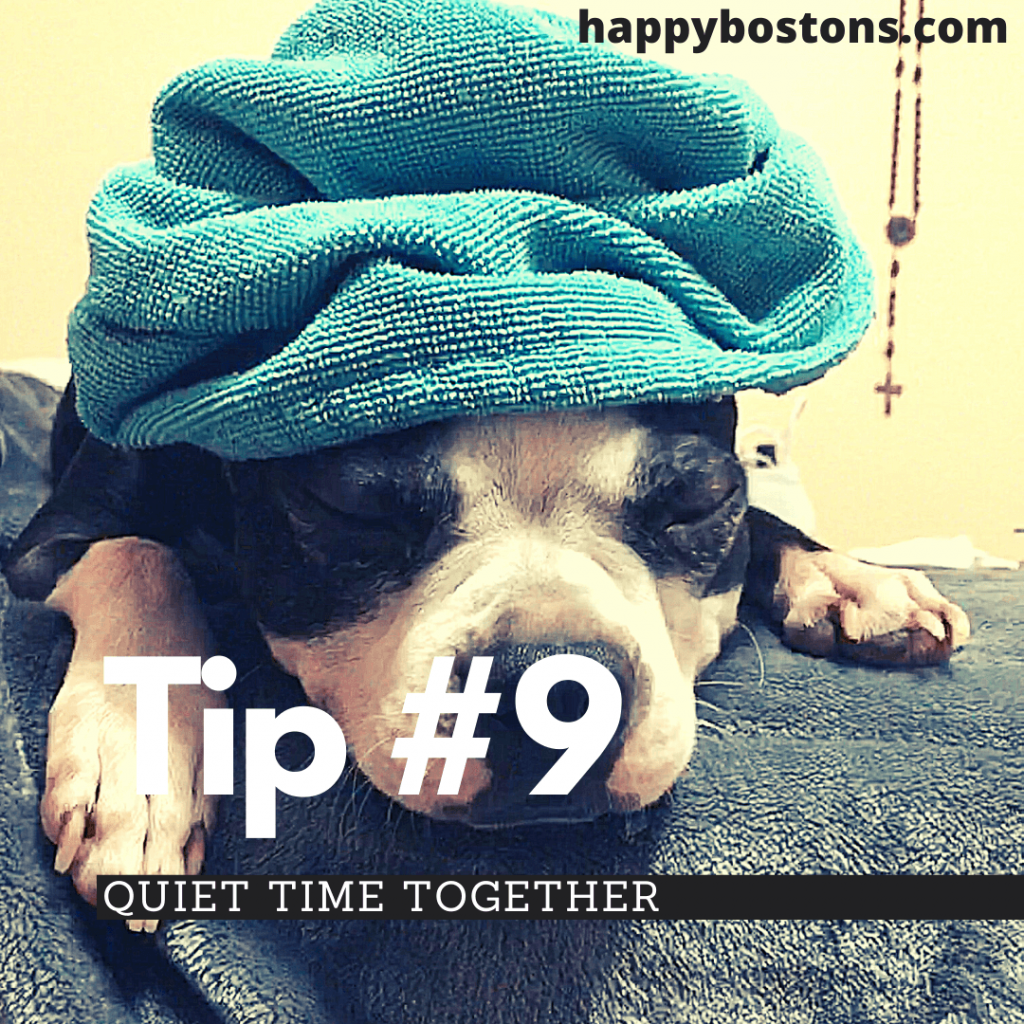
Boston Terriers are a semi-active breed. They need plenty of exercise and love to please their owners.
But, they also enjoy cuddling and just chilling with you.
Invite them into the hammock with you, or grab a pillow and blanket and lay on the floor. They might start playing, but in time will kick back, curl up and enjoy the comfort of being in your presence.
This quiet time is a special bonding time. You are providing acceptance and security. Plus, you’re just warm and cozy. Dogs sleep on and next to each other to keep warm in colder conditions. You are replicating this environment for them.
Taking quiet time with your Boston also teaches them that you are not just a food dispenser or play toy. You are their pack leader, and there is more than just running around when you call them.
10. Establish Ground Rules

This tip does tie into dog training but may be less formal.
Dogs, including Boston Terriers, need to know basic obedience training and understand the house rules.
Establishing rules and guidelines at a dog appropriate level creates a four-legged family member that is well mannered and easily sociable.
Think about rules like:
- Where should your Boston go when the doorbell rings?
- Where is it acceptable for them to sit while you prepare food in the kitchen?
- Where does your Boston sit while you fill their food bowl, and what sign do you give them consistently when you are ready for them to come and eat?
Bonus Tip #11 – Stay Healthy

The health of your Boston Terrier is essential for close bonding and their welfare.
Have a veterinarian that you see at least annually. You never know when a severe health crisis may happen and having a vet that already knows your dog and has baseline health records is helpful.
Periodically check your Boston over while cuddling or enjoying quiet time. Look for rashes, bumps, cuts, or anything out of the ordinary. This is when you will find ticks or bites between the body and legs or under the neck.
It is also a great time to check the collar. Is it too tight? Is it wearing out and chafing or irritation of the skin is happening? Wash and dry the collar while you are at it.
Keeping Boston Terriers at a healthy weight is vital for maximizing the life expectancy of your four-legged friend.
Answers In Video
Related Questions
Are male Boston Terriers more affectionate? Talking with Boston Terrier owners, we hear that both genders are affectionate. However, in our recent poll of male vs. female Boston Terriers referred to as affectionate, the quantity of males is higher by 13%.
Are female Boston Terriers more protective? Anecdotally, yes. While both genders of Boston Terriers may display protective barking of their family, we and others have experienced that their female Bostons seem to be more protective compared to their male counterparts.



